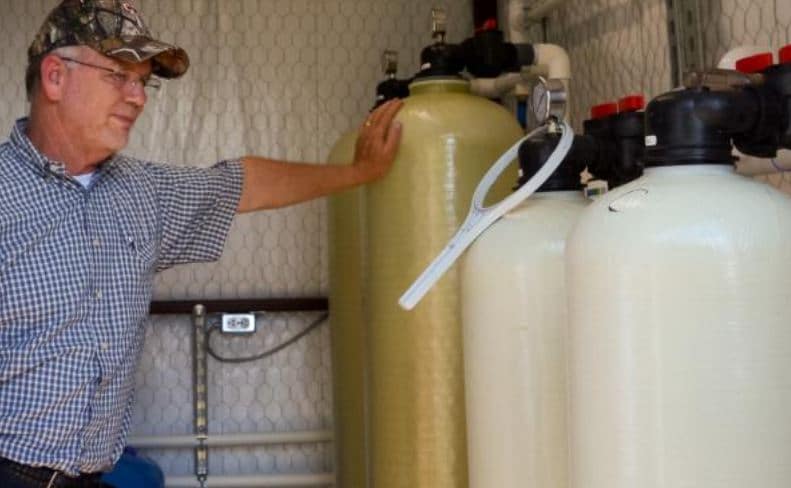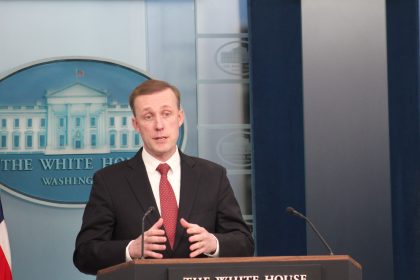Bipartisan PFAS Amendment to National Defense Authorization Act Introduced

WASHINGTON – Rep. Debbie Dingell, D-Mich., is leading a bipartisan coalition that wants to add a comprehensive solution to PFAS contamination to the Fiscal 2021 National Defense Authorization Act.
The amendment — originally proposed by Dingell and passed with bipartisan support in the House in January — would list select PFAS chemicals — PFOA and PFOS — as hazardous substances within one year under the Superfund program and direct federal resources to clean up contaminated sites and limit their spread.
The amendment would also require EPA to make a determination on all remaining PFAS chemicals within five years.
It is co-sponsored by Reps. Bill Posey, R-Fla., Ann McLane Kuster, D-N.H. Fred Upton, R-Mich., Lisa Blunt Rochester, D-Del., Brian Mast, R-Fla., and Mike Gallagher, R-Wis.
The full House is expected to vote on the National Defense Authorization Act and proposed amendments on Monday.
“PFAS is a clear and urgent public health and environmental threat,” Dingell said at a press briefing on Tuesday.
“Contamination sites continue to grow at an alarming rate across the country – especially at our military bases,” she continued. “PFAS contamination is poisoning our service members, families, and communities near military bases. We must accelerate the cleanup process and protect human health and the environment.
“In January, the House worked together in a bipartisan way to pass the Dingell PFAS bill. We can’t help communities until my legislation is passed by the Senate and signed into law. I’m filing this critical legislation as an amendment to the National Defense Authorization Act so we can get it over the finish line and stop the contamination from spreading any further,” she concluded.
The problems the lawmakers are seeking to address are associated with per- and polyfluoroalkyl substances, also known as PFAS chemicals, which are found in a number of industrial and household products, including firefighting foam.
A number of studies have linked PFAS chemicals to birth defects, infertility, developmental delays and some cancers.
The Defense Department began widespread testing for contamination in drinking water at its facilities in 2016, followed by testing of groundwater on and near military installations.
In 2018, it announced that of 524 installations examined, 401 have some level of contamination. Twenty-four of those had drinking water contamination at levels higher than the Environmental Protection Agency’s lifetime health advisory of 70 parts per trillion.
In July 2019, Defense Secretary Mark Esper directed the Pentagon to establish a task force to study the chemicals and the potential impact they have on military personnel and the communities surrounding domestic military facilities.
According to the Environmental Working Group, 297 military sites across the United States have been confirmed to have significant PFAS contamination and as many as 110 million Americans are drinking PFAS contaminated water.
During Tuesday’s briefing, Scott Faber, vice president of government affairs of the Environmental Working Group said PFAS, which he referred to as “forever chemicals,” are building up in the blood of virtually every American and have been linked to serious health problems, including immune system disorders and cancer.
“That’s why it’s so important that we reduce ongoing releases of PFAS pollution and clean up legacy PFAS contamination,” he said.
“The amendment filed by these legislators will do just that by finally placing limits on industrial releases of PFAS into the air and water and by setting a two-year deadline for EPA to establish a national standard for PFAS in our tap water,” Faber continued.
“By designating PFOA and PFOS as hazardous substances, their amendment will kick-start the clean-up process at the most contaminated sites and ensure that polluters help pay for clean-up costs,” he said.
“PFAS contamination is far more widespread than we once thought…. Most Americans are drinking water or eating food contaminated with PFAS, and these chemicals have now been confirmed to be in the groundwater or the drinking water of more than 1,500 communities, including hundreds of military installations.
“I’m so grateful for the leadership of these legislators and look forward to working with them to reduce and remediate PFAS pollution,” Faber said.
Congress has provided $40 million for the study through appropriations the Department of Defense received. A House committee agreed July 1 to add $15 million more in the National Defense Authorization Act for 2021.
After the NDAA passed in the House Armed Services Committee by a unanimous vote, Rep. John Garamendi, D-Calif., chairman of the Armed Services Subcommittee on Readiness said, “this legislation comes at a critical moment for our nation as we grapple with a once-in-a-century global pandemic.”
“This NDAA provides the resources necessary for our military to respond to the COVID-19 pandemic and help prevent the spread of this highly transmittable and deadly virus. The legislation also includes a much-deserved 3% pay increase for our service members and makes robust investments in training, infrastructure, sustainment, and logistics to support military readiness,” Garamendi said.
“As Chairman of the Armed Services Subcommittee on Readiness, I was pleased that the Readiness Subcommittee’s mark was unanimously approved by the committee,” he added. “The Readiness Subcommittee’s mark includes provisions to help the military prepare for the effects of climate change and reduce its greenhouse gas emissions, address contamination and health risks associated with Per- and Polyfluorinated Compounds (PFAS) around military installations—including Travis Air Force Base in my district—and ensure service members and their families have the best possible on-base housing.”
The bill advanced by the committee:
- Requires the Department of Defense to notify the Congressional defense committees when there has been an uncontrolled release of PFAS-containing firefighting agents;
- Establishes a prize that can be awarded by the Secretary of Defense for innovative research that results in a viable replacement agent for firefighting foam that does not contain PFAS;
- Requires the Department of Defense to survey and report on non-firefighting agent technologies, such as hangar flooring and firefighting equipment, that will help facilitate the phase-out of PFAS-containing firefighting agents; and
- Makes technical corrections to the FY20 National Defense Authorization Act to ensure that all National Guard installations are eligible for funding under the Defense Environmental Restoration Account for PFAS remediation.
Federally funded studies to understand the health effects of PFAS in communities that have drinking water contaminated with the chemicals have been slowed by the coronavirus pandemic.
Despite growing concern over the chemicals and health threat they pose, it wasn’t until late May that the White House Office of Management and Budget approved a research protocol developed by the Centers for Disease Control to carry out a new national study.
The effort will examine people living in eight areas where PFAS are known to have gotten into drinking water at concentrations above the Environmental Protection Agency’s health advisory.
The areas are El Paso County, Col.; Hyannis and Ayer, Mass.; Parchment/Cooper Township and North Kent County, Mich.; Pease International Tradeport near Portsmouth, N.H.; Gloucester County, N.J.; Hoosick Falls and Newburgh, N.Y.; Montgomery and Bucks counties, Pa.; and Orange, Anaheim, Yorba Linda, and nearby communities in California.

























